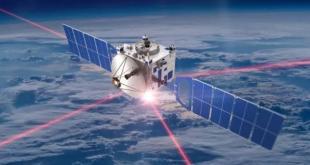 The INTERGEO is evolving. What have been the most important milestones of the trade fair in the last few years and what areas does the event focus on?
The INTERGEO is evolving. What have been the most important milestones of the trade fair in the last few years and what areas does the event focus on?
Since the inaugural event in 1995, INTERGEO has been designed with a view to maintain continuity and further development. From the outset, the prefix ‘Inter’ was meant to represent the fact that the event is interdisciplinary, international and interoperable. An integral part of this development process has been the congress element of the event, which tackles current issues with a high level of content and gives a real insight into this exciting community. In addition, we work very closely with the exhibiting technology companies to address new markets and target groups.
INTERGEO changes location each year, and this brings new opportunities. When we plan the location for the event, we listen to our exhibitors and we focus upon locations that attract the international community. This has intensified the overall international reach of the event.
In terms of content, we like to place particular emphasis on new fields of application. For example, under the umbrella of INTERGEO, we have quietly started to develop the largest drone fair in Europe. This is in the early stages of development.
 Last year, both the congress and the trade fair saw the emergence of the ‘smart cities’ or rather, the ‘digital city’. As there can be no smart cities or regions without geospatial data, INTERGEO offers a natural context to address this topic sustainably and substantially. With BIM, another event is under development, which also offers interesting perspectives at the interface to classical geodesy, which is the study of the Earth’s geometric shape, orientation in space and gravity field.
Last year, both the congress and the trade fair saw the emergence of the ‘smart cities’ or rather, the ‘digital city’. As there can be no smart cities or regions without geospatial data, INTERGEO offers a natural context to address this topic sustainably and substantially. With BIM, another event is under development, which also offers interesting perspectives at the interface to classical geodesy, which is the study of the Earth’s geometric shape, orientation in space and gravity field.
In addition, we find that interactive events such as INTERGEO provide an ideal platform for recruitment and career development opportunities. The scarcity of skilled workers is driving exhibiting companies to position themselves as interesting employers at INTERGEO.
INTERGEO has become a truly international event and awareness is steadily increasing about the event. How has this been achieved?
The international awareness of INTERGEO is steadily increasing. This is in line with the development of markets and the behaviour of stakeholders. At the trade fair there has been an increasing emphasis on the English language for several years, and important topics are now simultaneously translated into the congress. INTERGEO is developing internationally without forgetting its roots. The foundation is still based on Germany, Austria and Switzerland, but growth is strongly driven by the globalisation of the industry. We have received registrations from over 100 different countries of origin. At present, the focus is on Europe, the Middle East, Asia and North America. The largest contingents come from China, the USA and the UK.
In addition to globalisation, it is the strong content that is offered at INTERGEO which has strengthened the event on both the national and international stage. The Congress’ reputation is second to none due to its content, and this continues to be the impetus for the event. In addition, there are low-threshold information formats such as forums, but also year-round communication offerings such as INTERGEO TV. These different elements, in their totality, drive INTERGEO and maintain its dynamic development path.
What are the new features and the main focus for visitors this year?
 The main focus for visitors this year will be the entire ecosystem from classical surveying to integrated software solutions. The buzzword ‘BigData’ is set to evolve into “SmartData” or “PersonalData”. This of course is accompanied by new solutions. The sector of Augmented and Virtual Reality is also gradually being systematically integrated into the process chain. In the coming years, there will be a lot of momentum in INTERGEO.
The main focus for visitors this year will be the entire ecosystem from classical surveying to integrated software solutions. The buzzword ‘BigData’ is set to evolve into “SmartData” or “PersonalData”. This of course is accompanied by new solutions. The sector of Augmented and Virtual Reality is also gradually being systematically integrated into the process chain. In the coming years, there will be a lot of momentum in INTERGEO.
In Berlin, the interlinking of surveying, photogrammetry and cartography will open interesting doors, not least due to the synergies we can draw upon with the German Cartography Congress. Under the title ‘Smart Cartography’, new dimensions will play a role in the use and application of digital maps.
Future expectations from Copernicus are also an exciting topic that will be covered. This potentially extends far beyond the range of environmental data and can also provide politically valuable information within the EU.
As a venue, Berlin has a certain potential for tension in the shadow of political initiatives on all kinds of digital strategies. In your opinion, what do you need from the political environment to stimulate digitalisation and networking in the everyday life of companies and people?
At the time of this year’s INTERGEO, Berlin will be processing the results of the Bundestag elections. Germany is not necessarily a first mover when it comes to digitisation. Especially in the BIM area, it is essential that strategy is carried out with a step-by-step plan. Momentum must be maintained in terms of broad communication with relevant circles. The policy is to promote the digitisation and the re-evaluation of spatial data in order to enable new business models.
However, in the light of the example of the recent drone regulation, there is evidence that the dynamics of the application of this technology are temporarily hampered by political framework conditions. Here, the right attitude to the policy will be required to make it work.
What support INTERGEO can provide in this environment?
As an ‘innovation hub’, INTERGEO has become a place where new co-operations and business ideas are born and start-ups and young companies have excellent opportunities to showcase themselves and to enter the markets quickly. INTERGEO is a dynamic platform in a key area that facilitates the interaction of business, science and politics. Berlin will provide the ideal backdrop for this, both on a national and international level. ‘Knowledge and action for the earth’ is the goal.
Original published at: https://spacewatch.global/2017/09/spacewatchme-forecast-intergeo-2017-berlin-germany/
 SpaceWatch.Global An independent perspective on space
SpaceWatch.Global An independent perspective on space

